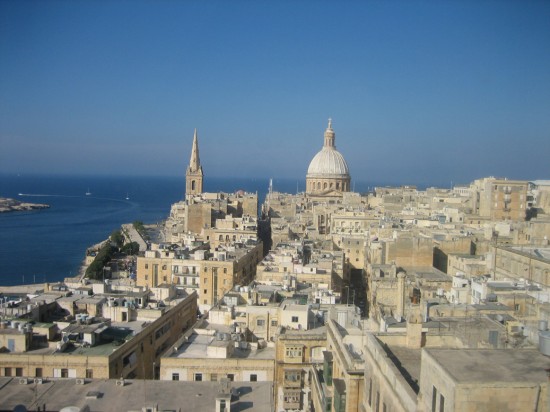by Jude Rogers.
16. Tan Lines
And then, just like that, we’re in Malta. Dave is getting married to Katie, in a big Catholic church in the centre of a tiny town, so Ailsa and I have travelled out here to see them, and wander in the slow, sleepy sun before their big day. We stay in Valletta, the capital city that rises from a rocky peninsula, a quieter home for two people happily past their prime partying years. Here, long shadows spill lazily from golden stone, and many cultures and traditions nuzzle messily together.
On our first full day, slathered in Factor 30, we turn our eyes towards the sky, our white arms bare before the heat.
a. Valletta became Valletta in the 16th century. Its fortifications were built after the Ottomans invaded, the Christian Knights fought back, and a third of the island’s citizens died. Then you find out about the history that followed The Siege Of Malta – the arrival of the French and the Italians, the colonisation of the British, and it becoming the most bombed country on earth during the Second World War.
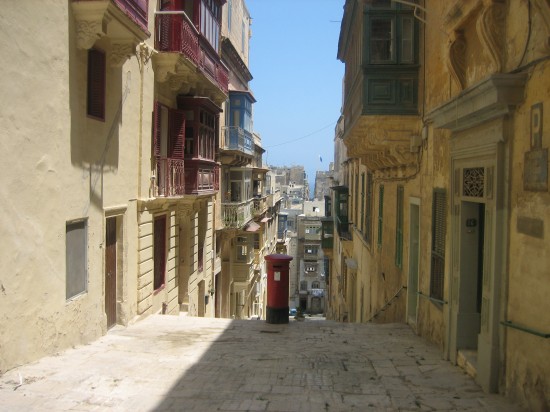
You feel the past in the architecture with every step. Turn a corner and you feel Venice on your breath, Constantinople on the skin, Africa in your blood, Paris on your tongue. But turn our corner, from the old-fashioned Hotel Osborne, and Britain beams out of a bright red post box. Guarding steep, stone steps, it sits politely on the edge of all these very different worlds.
b. We walk on, letting the sunshine trickle down our backs, and discover that Valletta is a haven for the beautiful shop sign, a living museum of typefaces and peculiar designs. Down towards the water’s edge, we fall in love with Carmelo Delia, a furniture factory that shows little signs of life, despite the bold claims of its slogan, the sheer size of its statement.
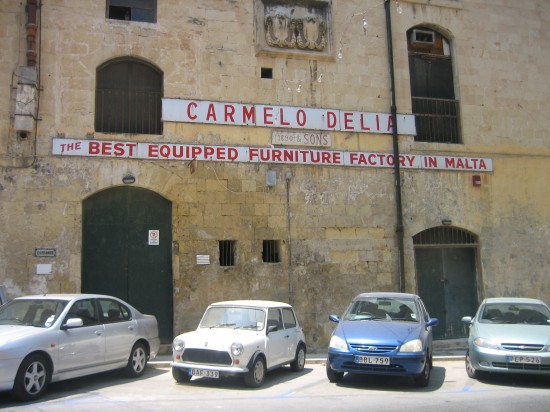
Towards the south of the peninsula, towards the fort of St Elmo, the sea air cools us down, and we pass other lovely things. The Hollywood Stationers, glinting in dark green and silver like a 1920s film poster. The black and gold shimmer of the Useful Bazaar. The white, red and dirt of the modernist clothes shop Die Mode. All of them are shut for the day, or perhaps closed forever, slumbering sadly as they siesta.
c. Churches and Catholic icons carry our footprints along. Mother Mary lowers her eyes outside every other front door. Little churches cram themselves apologetically between cafes and restaurants. Evangelical men raise their hands on dusty street corners, defiant among the parking regulations and no entry signs.
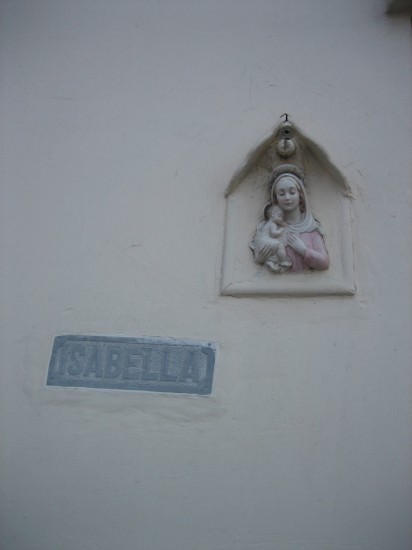
d. We carry on walking, avoiding busy stretches for strange, lonely side-streets. We lap around the peninsula, just like the wet, heavy tides. We eventually come to the War Memorial on the city’s western flank, a circular tower housing a large, black bell. It chimes at midday, every day, to commemorate the normal people that died here between 1940 and 1943, when the Italians and Germans fought against the Allied Forces. It does while we’re here, ringing peacefully out to the sea, to the cruise ships and pleasure boats, to peace that clings like the breeze.
e. Going north, we come to the Upper Barracca Gardens, full of roman porticos and green, glossy trees. In its shadows, old weathered men scrunch up their shirt sleeves, teenagers fumble and kiss, cats stretch out like worn leather. We wait, drink our water, and look down to the shore, and we suddenly spot a thick line of black cannons. This is the Saluting Battery, as it says on the sign, which we will later hear firing and booming for festival season.
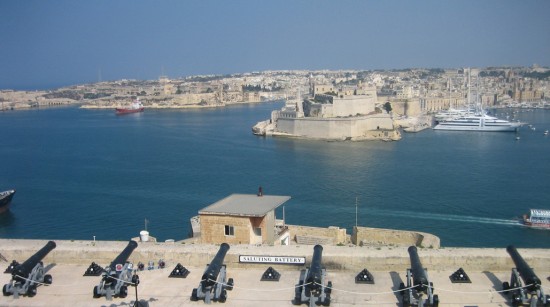
We wonder what Valletta’s older guard think as smoke rises from the stones. Perhaps it is just part of them, of what went, and what follows.
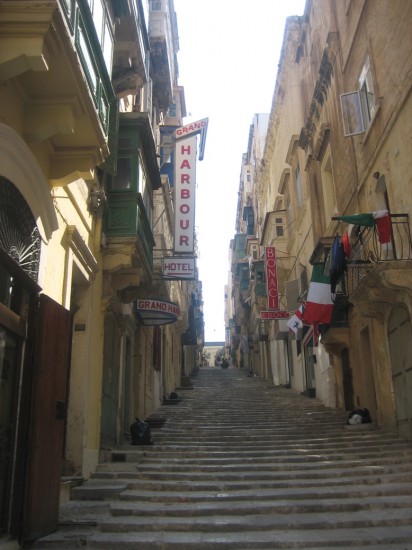
f. We walk back up the steps, past the British Hotel, past tapestries of the Pope, and curiosity shops. The heat is stifling now, so we dip into the shadows, and head back slowly and gently to our temporary home. As we do, we see the strong, boxy buildings rolling out underneath us, the strident domes and the towers, the white insects that buzz around the blueness, going North to Sicily, east to Greece, west to Tunisia, south to Libya. As we do, we marvel how this island pulls everything together, and how, despite everything, it still blooms and burns.
